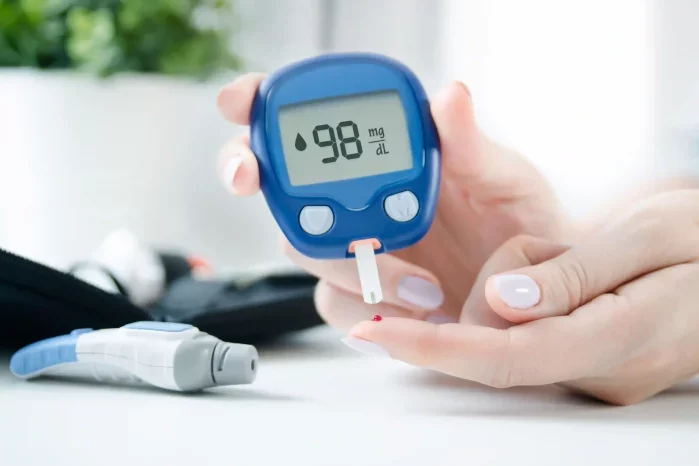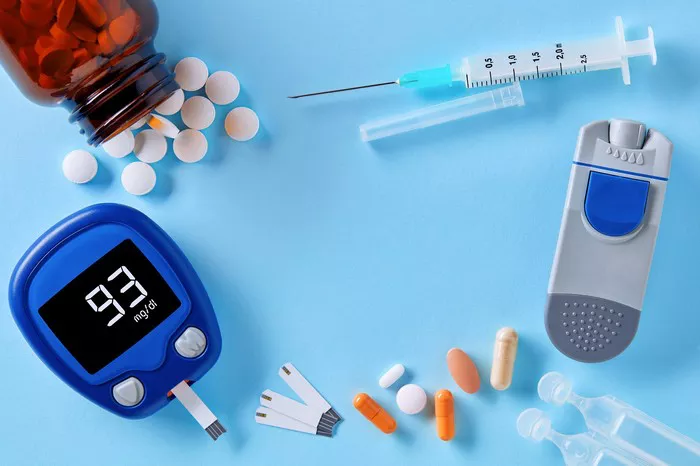Type 1 diabetes (T1D) is a chronic autoimmune condition characterized by the destruction of insulin-producing beta cells in the pancreas. This leads to an absolute deficiency of insulin, a hormone essential for glucose regulation. While advances in diabetes management have significantly improved the quality and longevity of life for individuals with type 1 diabetes, it remains a condition fraught with serious health risks. This article explores the primary causes of mortality among people with type 1 diabetes, delving into the complications and factors that contribute to these outcomes. Understanding these risks is crucial for improving management strategies and enhancing patient care.
Overview of Type 1 Diabetes
Pathophysiology and Diagnosis
Type 1 diabetes occurs when the immune system mistakenly attacks and destroys the insulin-producing beta cells in the pancreas. This autoimmune reaction leads to an absolute deficiency of insulin, causing elevated blood glucose levels. The onset of type 1 diabetes can occur at any age but is most commonly diagnosed in children and young adults. Diagnosis is confirmed through various tests, including fasting blood glucose, oral glucose tolerance tests, hemoglobin A1c, and the presence of autoantibodies.
Management of Type 1 Diabetes
The cornerstone of type 1 diabetes management is insulin therapy, which involves administering insulin to regulate blood glucose levels. Insulin can be delivered through injections or insulin pumps, and continuous glucose monitoring (CGM) systems are often used to track blood glucose levels in real-time. A balanced diet, regular physical activity, and ongoing education are essential components of comprehensive diabetes care.
Leading Causes of Mortality in Type 1 Diabetes
Cardiovascular Disease (CVD)
Prevalence and Impact Cardiovascular disease is the leading cause of death among individuals with type 1 diabetes. People with type 1 diabetes have a significantly increased risk of developing cardiovascular complications, including coronary artery disease, heart attacks, and strokes. Studies indicate that the risk of cardiovascular events is several times higher in individuals with type 1 diabetes compared to the general population.
Pathophysiological Mechanisms The mechanisms underlying the increased cardiovascular risk in type 1 diabetes include chronic hyperglycemia, insulin resistance, inflammation, and endothelial dysfunction. Chronic high blood glucose levels contribute to the formation of advanced glycation end-products (AGEs), which damage blood vessels and promote atherosclerosis. Additionally, individuals with type 1 diabetes often have other risk factors such as hypertension, dyslipidemia (abnormal lipid levels), and obesity.
Prevention and Management Managing cardiovascular risk in type 1 diabetes involves aggressive control of blood glucose levels, blood pressure, and lipid levels. Lifestyle modifications, including a heart-healthy diet, regular exercise, and smoking cessation, are crucial. Medications such as statins, antihypertensives, and antiplatelet agents may also be prescribed to reduce cardiovascular risk.
Diabetic Ketoacidosis (DKA)
Prevalence and Impact Diabetic ketoacidosis is a potentially life-threatening complication of type 1 diabetes characterized by severe hyperglycemia, ketosis, and metabolic acidosis. It occurs when the body cannot use glucose for energy due to insufficient insulin and starts breaking down fat for fuel, leading to the accumulation of ketones in the blood. DKA can develop rapidly and requires immediate medical attention.
Risk Factors and Triggers Common triggers of DKA include missed insulin doses, infections, illnesses, and severe stress. Inadequate diabetes management and lack of access to healthcare can also increase the risk. DKA is more likely to occur in individuals with poorly controlled diabetes or those newly diagnosed with type 1 diabetes.
Prevention and Management Preventing DKA involves diligent diabetes management, including regular monitoring of blood glucose levels and adherence to insulin therapy. Patients and caregivers should be educated on recognizing the early signs of DKA, such as excessive thirst, frequent urination, nausea, vomiting, and abdominal pain. Prompt treatment with intravenous fluids, insulin, and electrolyte replacement is essential to manage DKA and prevent complications.
Chronic Kidney Disease (CKD)
Prevalence and Impact Chronic kidney disease is a common complication of long-standing type 1 diabetes and a significant cause of morbidity and mortality. Diabetes is the leading cause of end-stage renal disease (ESRD), requiring dialysis or kidney transplantation. CKD progresses gradually and may lead to renal failure if not adequately managed.
Pathophysiological Mechanisms The development of CKD in type 1 diabetes is primarily driven by chronic hyperglycemia, hypertension, and genetic factors. Persistent high blood glucose levels damage the glomeruli, the filtering units of the kidneys, leading to proteinuria (protein in the urine) and progressive loss of kidney function. Hypertension further accelerates kidney damage.
Prevention and Management Preventing CKD involves strict control of blood glucose levels and blood pressure. Regular screening for kidney function, including measuring urinary albumin and serum creatinine levels, is essential for early detection and management. Angiotensin-converting enzyme (ACE) inhibitors or angiotensin II receptor blockers (ARBs) are often prescribed to protect kidney function and reduce proteinuria.
Hypoglycemia and Hypoglycemia Unawareness
Prevalence and Impact Hypoglycemia, or low blood glucose levels, is a common and potentially life-threatening complication of insulin therapy in type 1 diabetes. Severe hypoglycemia can lead to seizures, loss of consciousness, and, in extreme cases, death. Hypoglycemia unawareness, where individuals do not recognize the early symptoms of low blood glucose, increases the risk of severe episodes.
Risk Factors and Triggers Factors contributing to hypoglycemia include excessive insulin doses, skipped meals, prolonged physical activity, and alcohol consumption. Individuals with a long duration of type 1 diabetes or those who frequently experience hypoglycemia may develop hypoglycemia unawareness, making it challenging to manage blood glucose levels effectively.
Prevention and Management Preventing hypoglycemia involves careful insulin dosing, regular monitoring of blood glucose levels, and understanding the impact of diet and physical activity on glucose levels. Education on recognizing and treating early signs of hypoglycemia, such as shakiness, sweating, confusion, and irritability, is crucial. Continuous glucose monitoring (CGM) systems can provide real-time alerts to help prevent severe episodes.
Diabetic Neuropathy and Related Complications
Prevalence and Impact Diabetic neuropathy is a common complication of type 1 diabetes, affecting the peripheral nerves. It can lead to various complications, including foot ulcers, infections, and amputations. Severe neuropathy can result in loss of sensation, increasing the risk of unnoticed injuries and infections.
Pathophysiological Mechanisms Chronic hyperglycemia damages the nerves through multiple mechanisms, including oxidative stress, inflammation, and impaired blood flow to the nerves. The resulting nerve damage can affect sensory, motor, and autonomic functions, leading to a wide range of symptoms and complications.
Prevention and Management Preventing diabetic neuropathy involves maintaining optimal blood glucose control and addressing other risk factors such as hypertension and dyslipidemia. Regular foot care and screening for neuropathy are essential to detect early signs and prevent complications. Treatment may include medications for pain management, physical therapy, and lifestyle modifications to reduce the risk of injuries and infections.
Emerging Trends and Future Directions
Advances in Diabetes Technology
Recent advances in diabetes technology, including continuous glucose monitors (CGMs), insulin pumps, and hybrid closed-loop systems (also known as artificial pancreas systems), have significantly improved diabetes management. These technologies help individuals with type 1 diabetes maintain better blood glucose control and reduce the risk of complications. Ongoing research and development aim to enhance the accuracy, usability, and accessibility of these devices.
Personalized Medicine and Treatment Approaches
Personalized medicine, which tailors treatment strategies to an individual’s unique genetic, environmental, and lifestyle factors, holds promise for improving outcomes in type 1 diabetes. Advances in genomics, biomarkers, and artificial intelligence are driving the development of personalized approaches to diabetes care. These strategies aim to optimize insulin therapy, predict complications, and provide targeted interventions.
Immunotherapy and Beta Cell Regeneration
Research into immunotherapy and beta cell regeneration offers hope for the future of type 1 diabetes treatment. Immunotherapy aims to modulate the immune system to prevent or halt the autoimmune destruction of beta cells. Beta cell regeneration and transplantation research focuses on restoring the body’s ability to produce insulin naturally. While these approaches are still in experimental stages, they represent potential breakthroughs in the treatment of type 1 diabetes.
See also: What Happens If You Don’t Treat Type 1 Diabetes
Conclusion
Type 1 diabetes is a complex and challenging condition that requires lifelong management and vigilance. While advances in diabetes care have significantly improved outcomes, individuals with type 1 diabetes remain at risk for serious complications that can impact their mortality. Cardiovascular disease, diabetic ketoacidosis, chronic kidney disease, hypoglycemia, and diabetic neuropathy are among the leading causes of death in individuals with type 1 diabetes. Understanding these risks, recognizing early signs, and implementing effective management strategies are crucial for improving patient outcomes and reducing mortality. With continued research, advancements in technology, and personalized treatment approaches, the future holds promise for further improving the lives of individuals with type 1 diabetes.
Related topics:
What Causes Impaired Fasting Glucose?


























